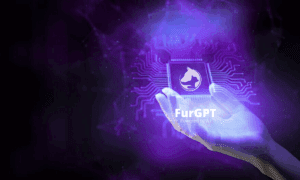In the ever-changing work environment, forward-thinking cloud HR software plays a significant role. These are the 14 vital features that should be a part of your cloud HR software to ensure that it is future-proof and can effectively cater to your organization’s needs.
Cloud HR Software versus On-Premise HR Software
Before delving into the essential features of future-proof cloud HR software, it’s crucial to understand the fundamental difference between “cloud HR software” and “on-premise HR software”
Cloud HR Software
Cloud HR software is a solution that is hosted on the vendor’s servers and accessed through the Internet. This means the data is stored in the cloud and can be accessed anytime, anywhere, making it highly convenient for remote work environments.
The vendor is responsible for updates, maintenance, and security of the software, which can significantly reduce the burden on your IT team. Furthermore, cloud-based solutions typically operate on a subscription model, making them more affordable as they don’t require a large upfront investment.
On-Premise HR Software
On the other hand, on-premise HR software is installed and run on your company’s servers. This means you have full control over the security and maintenance of the system. However, it also means your IT team is responsible for any updates and handling any issues that arise, which can be time-consuming.
On-premise solutions usually involve a significant upfront cost for the software license, implementation, and necessary hardware.
While both have their pros and cons, the shift towards remote working and the need for flexible, accessible solutions has seen many organizations gravitate towards cloud HR software. The ability to access data in real-time, from any location, and the ease of integration with other cloud-based systems are just a few of the benefits that make cloud HR software an attractive option for businesses looking to streamline their HR processes and prepare for the future of work.
The 14 Must-Have Features of Cloud HR Software in 2024
Now that we’ve established the advantages of cloud HR software over on-premise solutions, it’s time to delve into the specific features that make this software a must-have for businesses preparing for the future. These 14 key features serve distinct functions that offer immense benefits, making them indispensable for any organization. Let’s explore each feature’s function, its necessity, and how best to implement it for maximum effectiveness.
Unified Database
A unified database consolidates all HR data, streamlines processes, and eliminates errors from managing multiple databases. It’s a must-have for real-time data access, enabling faster, more accurate decision-making. This system works by aggregating HR data into a central, automatically updated repository, ensuring data integrity and expediting decision-making.
Empowering Employees through Self-Service
Employee self-service portals are powerful tools that enable employees to manage their own HR needs. The functionality of these features includes:
- Updating Personal Information: Employees can modify their details as needed, ensuring the accuracy of HR records.
- Applying for Leave: Employees can request time off, streamlining the leave application process.
- Accessing Pay Slips: Employees can view their pay details anytime, promoting transparency.
These portals are a must-have due to:
- Time Efficiency: They reduce the workload of the HR team by allowing employees to handle their own HR tasks.
- Employee Satisfaction: By giving employees control over their information, these portals boost morale and satisfaction.
The operation of these portals is straightforward:
- Employees log in using their credentials.
- They navigate to the relevant section (e.g., personal information, leave application, or pay slips).
- They make necessary changes or requests, which are automatically updated in the HR system. This ensures real-time accuracy and efficiency.
Talent Nurturing and Management
Cloud HR software revolutionizes talent nurturing and management within an organization. Its multifaceted functionality allows HR teams to track employee performance, pinpoint skill gaps, strategize training initiatives, and oversee succession planning.
This software is indispensable. It not only optimizes the workforce by identifying top performers and areas of improvement but also ensures future readiness through effective succession planning.
The operation of this software is seamless. HR teams input pertinent employee data, which the software analyzes to guide training plans and succession strategies, thereby fortifying the organization’s competitiveness and preparedness for future challenges.
Effective Recruitment Capabilities
Sophisticated recruitment capabilities are the backbone of an efficient HR function. They streamline job posting, applicant tracking, resume parsing, interview scheduling, and onboard integration. These features are integral as they expedite the recruitment process and play a crucial role in attracting, assessing, and securing top talent.
The seamless functioning of these features begins with the HR team inputting job requirements. The system then takes over managing postings, tracking applications, parsing resumes, scheduling interviews, and integrating new hires, thereby ensuring a smooth and efficient recruitment process.
Facilitating Seamless Onboarding and Offboarding
Cloud HR software is instrumental in refining onboarding and offboarding experiences, guaranteeing smooth transitions for the organization and its employees. The purpose of features like automated workflows, checklists, and reminders is to streamline these processes, thereby minimizing time and effort.
The necessity for such software arises from its ability to ensure no crucial tasks are overlooked, significantly enhancing compliance and reducing errors.
The mechanism involves the HR team setting up the necessary processes within the software. The system then automates these tasks, sending timely reminders and checklists, ensuring a seamless transition during onboarding and offboarding.
Simplified Payroll and Reward Management
Cloud HR software is a game-changer in payroll and reward management. It’s designed to automate intricate calculations, deductions, tax submissions, and more, simplifying these often complex processes.
The significance of this software lies in its accuracy, compliance assurance, and timely execution of critical HR functions. It also administers rewards and recognition programs, key factors in employee motivation and retention.
The process commences with the HR team inputting payroll data and setting reward parameters. The software then takes over, conducting necessary calculations, filing taxes, and managing reward distribution. This ensures a smooth, error-free, and efficient operation of payroll and reward management.
Efficient Benefits Administration
Cloud HR software plays a pivotal role in employee benefits management, an essential facet of HR. Its functionality lies in the seamless administration of benefits such as health insurance, retirement schemes, and vacation policies.
The imperative for this software is its capacity to allow employees to review and select their benefits, which lightens the administrative burden on HR while simultaneously boosting employee satisfaction by giving them autonomy over their benefits.
The method consists of HR staff populating the system with various benefit options. Employees can then log in, view these options, and make their choices, resulting in a smooth, user-friendly benefits administration process that benefits both HR and the workforce.
Precision in Time Tracking
Accurate time-tracking systems are essential for productivity management. They help in:
- Monitoring employee attendance
- Tracking work hours
- Managing shifts
- Calculating overtime
This data is crucial for payroll processing, performance management, and workforce planning.
Sophisticated Employee Scheduling
The advanced scheduling features of Cloud HR software are key to synchronizing diverse teams, particularly in remote or hybrid work settings.
These features aid in the management of shift rotations, task assignments, project timeline tracking, and optimal resource utilization. They provide a comprehensive view of all activities, enabling efficient planning and coordination. They ensure that tasks are evenly distributed, deadlines are met, and resources are used effectively. This leads to increased productivity, improved team collaboration, and reduced operational costs.
Implementing these features involves setting up the software to meet your organization’s specific scheduling needs. Once set up, managers can assign tasks, manage shifts, track project timelines, and monitor resource use, all within a single platform. Employees, in turn, can access their schedules, understand their responsibilities, and stay updated on project progress. This results in streamlined operations, clear communication, and a more cohesive workforce.
Integrated Performance Management Systems
Performance management modules in cloud HR software help set goals, provide feedback, conduct appraisals, and manage performance improvement plans. These tools foster employee growth and success, leading to improved organizational performance.
Companies like Grove HR offer robust performance management systems that are designed to seamlessly integrate with their cloud HR software, making them an excellent choice for organizations looking to enhance their performance management processes; you can also register for a free package with over 30+ core features included for companies under 50 employees.
Promoting Continuous Learning and Development
They serve the purpose of facilitating employee upskilling and stimulating innovation, thus helping maintain a competitive edge. Their importance cannot be overstated, considering the rapid pace of change in most sectors. These tools are essential to ensure your team stays updated, innovative, and competitive.
Once these modules are integrated into your HR strategy, they provide a platform for employees to access training materials, monitor their progress, and apply their newly acquired skills, making them an indispensable tool in modern human resource management.
Cultivating Employee Engagement
Employee engagement tools embedded in HR software are instrumental in fostering a positive and productive work culture. The function of these tools, including surveys, feedback mechanisms, and social recognition platforms, is to comprehend employee needs, enhance communication, and cultivate a sense of belonging.
The necessity of these tools lies in their ability to boost morale, productivity, and retain talent, making them a must-have in any modern workplace. Implementing these tools involves integrating them into your daily operations, creating an open channel for employees to express their thoughts, receive recognition, and feel more connected to their workplace.
Insightful Workforce Analytics
Workforce analytics, an essential feature of modern HR software, offer valuable insights into workforce trends and behaviors. Their primary function is to enable data-driven decisions related to crucial aspects such as recruitment, retention, engagement, and productivity. The indispensability of these analytics stems from their power to inform strategic decision-making, thereby enhancing efficiency and driving business growth.
To make the most of these analytics, organizations need to integrate them into their decision-making processes. By doing so, they can leverage data to identify patterns, predict trends, and make informed decisions that contribute to the organization’s success.
Compliance Assurance
Compliance’s primary function is to aid in maintaining records, generating reports, tracking legislation changes, and managing compliance training. The must-have status of compliance assurance comes from its role in mitigating legal risks and ensuring regulatory adherence, which is essential for any organization’s credibility and operational smoothness.
Organizations should integrate this feature into their daily operations to utilize it effectively. This integration enables continuous monitoring and updates, ensuring the organization stays compliant with all relevant regulations and laws, thereby fostering a compliant and secure work environment.
Wrapping Up
In conclusion, these 14 features are essential for creating a resilient, future-proof HR system. They not only automate and streamline HR processes but also lead to improved decision-making, better compliance, and enhanced employee experience. Therefore, when choosing a cloud HR software for your organization, ensure it has these features.



































